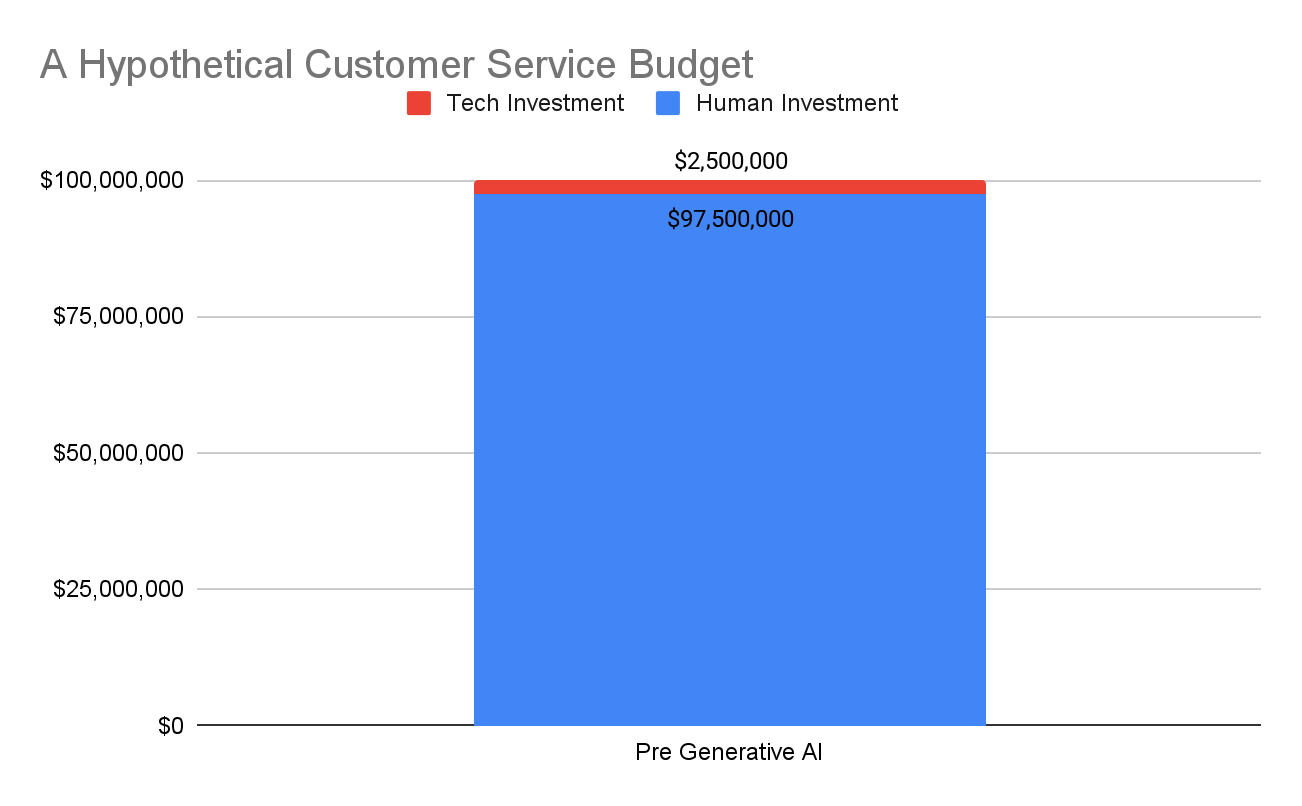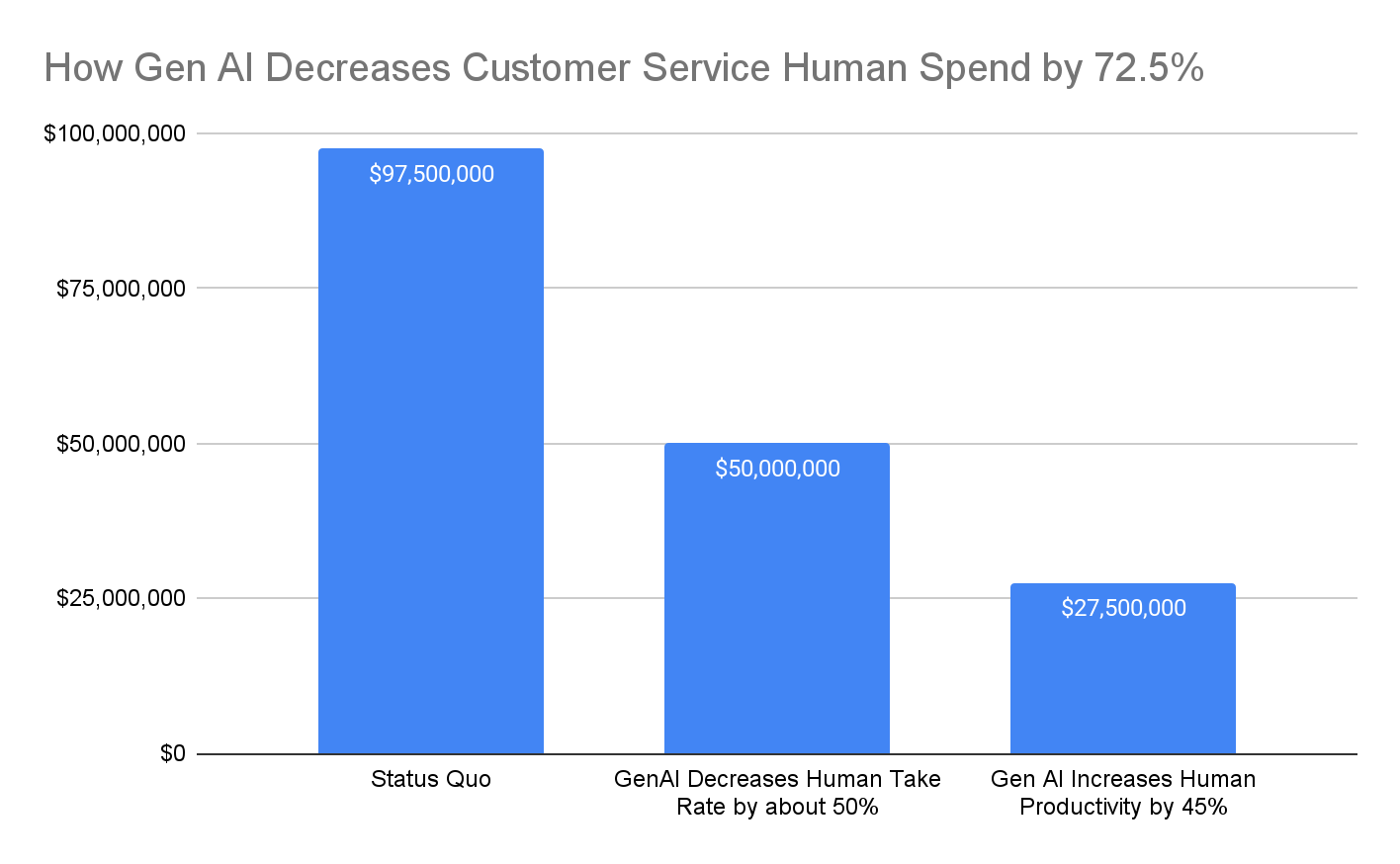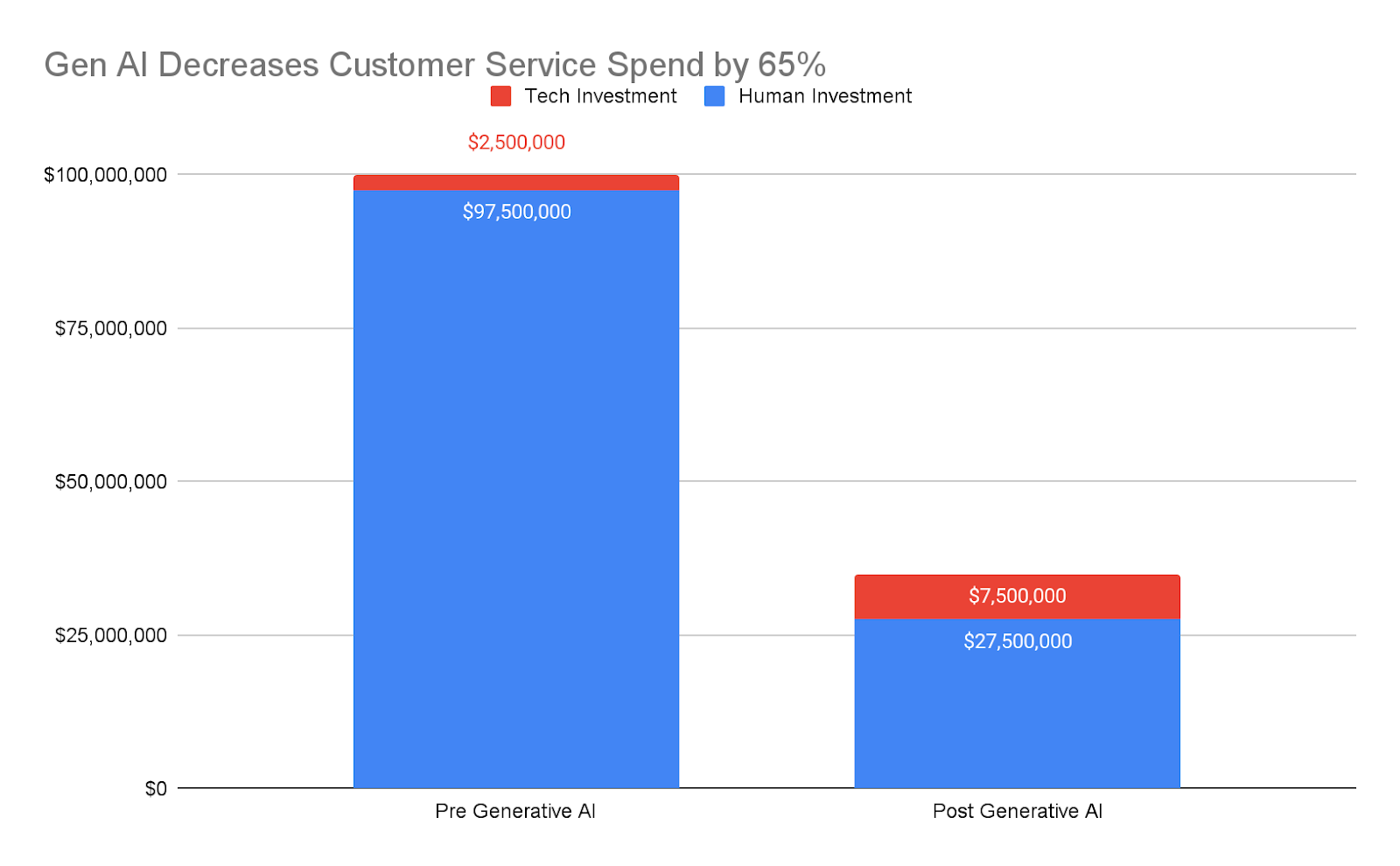One of the best reports I’ve read recently on the impact generative AI will have on customer service comes from McKinsey. Published last month, “The economic potential of generative AI” takes both a macro look at how generative AI will shape economic productivity at large, and goes deep into five business functions in particular: customer operations, marketing, sales, product/R&D, and software engineering.
Chances are, you’re here for customer service content, so, let’s spend a little time on what McKinsey uncovered about generative AI and customer operations.
There are two statistics in the report that blew my mind:
- “We estimate that generative AI could further reduce the volume of human-serviced contacts by up to 50 percent.”
- “We estimate that applying generative AI to customer care functions could increase productivity at a value ranging from 30 to 45 percent of current function costs.”
Each statistic by itself has profound implications on the future of customer operations. When you combine them, however, the result will wholly upend how customer operations organizations function.
Let’s go through a quick math exercise to demonstrate what we’re talking about: Say we have a hypothetical enterprise that spends about $100 million annually on customer operations ($97.5m on human agents, $2.5m on tech).

If the number of inquiries that require a human is reduced by 50% by generative AI, then the human spend goes from $100 million to $50 million. On top of that, if generative AI then increases productivity by 45%, then you can get that same amount of output at $27.5 million ($50m X .45 = $27.5m).

Now, you obviously have to invest in more generative AI and automation technology to realize those productivity benefits. So let’s say the company triples their technology spend, from $2.5m annually to $7.5m. This brings the total technology investment from about 2.5% of the budget to 20%, but the combined cost of the total customer care (humans and technology) is now $35m.
That means, with the infusion of generative AI, an enterprise customer care organization’s budget can go from $100m to $35m…while maintaining the same level of output.

And that doesn’t even take into consideration a presumed increase in customer satisfaction due to a better and more personalized experience that is also created through generative AI, or the ability for customer care organizations to better and more quickly identify upsell and repurchase opportunities, resulting in more revenue being generated by customer care at roughly one-third the cost.
An appreciative CFO would presumably direct some portion of those savings directly to the bottom line. But it also opens up an incredible amount of new resources in both employee time and finances towards other CX initiatives. Could you invest some of those extra funds towards developing more proactive outbound customer communications, thus further decreasing inbound inquiries? Could you invest more in customer service data analysis to bring voice of the customer data to the rest of your organization? Could you develop new customer service experiences for your most loyal customers, thus further securing their loyalty and advocacy?
The productivity implications are fun to think about. But it is these questions around what we can do when automation takes other things off our plate that excite me most.
McKinsey’s full report, “The economic potential of generative AI” can be found here.

Guest post written by Simplr.


































 TELUS Digital
TELUS Digital ibex delivers innovative BPO, smart digital marketing, online acquisition technology, and end-to-end customer engagement solutions to help companies acquire, engage and retain customers. ibex leverages its diverse global team and industry-leading technology, including its AI-powered ibex Wave iX solutions suite, to drive superior CX for top brands across retail, e-commerce, healthcare, fintech, utilities and logistics.
ibex delivers innovative BPO, smart digital marketing, online acquisition technology, and end-to-end customer engagement solutions to help companies acquire, engage and retain customers. ibex leverages its diverse global team and industry-leading technology, including its AI-powered ibex Wave iX solutions suite, to drive superior CX for top brands across retail, e-commerce, healthcare, fintech, utilities and logistics.






















 Trista Miller
Trista Miller





























